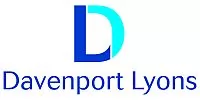With HR departments increasingly monitoring computer and phone use, using CCTV to keep tabs on employees at work and carrying out alcohol and drug testing, it is no surprise to see that issues around surveillance keep cropping up in the employment tribunals.
Covert recordings by employer
In City and County of Swansea v Gayle the EAT held that an employer did not breach an employee's human rights when it employed a private investigator to film covertly an employee playing squash when he claimed to be working. In the EAT's view, there is no right to privacy under Article 8 of the European Convention on Human Rights when the employee's acts are defrauding the employer. However reprehensible an employer's behaviour may be in moral or social terms, it is only the extent to which that impacts on the fairness of the dismissal which is relevant to the tribunal's decision.
Action points
The employer in the above case was criticised by the employment tribunal for not knowing about the Employment Practices Data Protection Code published by the Information Commissioner. The Code is intended to ensure compliance with the Data Protection Act 1998. It is not a legally enforceable document but may be used in evidence at a tribunal and as such has relevant recommendations for employers including:
- Covert surveillance should only be carried out if the employer suspects criminal activity or serious malpractice;
- The employer's senior management should carry out an impact assessment to decide whether to carry out the surveillance and how it should be carried out;
- Surveillance of staff outside the workplace is acceptable if the employer can show that it is justified and proportionate (which means the surveillance does not go further than is necessary).
The message to employers is that covert surveillance is likely to be used rarely and only where the employer has no other option.
Covert recordings by employee
It is not just employers that are making use of secret recordings. In the recent case of Vaughan v London Borough of Lewisham, the employee applied to introduce 39 hours of covert recordings made using a Dictaphone in support of her discrimination claim. These included interactions with managers and colleagues and recordings of disciplinary hearings, which she claimed showed that her employers were lying. An employment judge refused permission and the employee appealed.
The EAT held that in principle covert recordings made by an employee could be used in evidence at a tribunal even though the EAT felt that the practice is "distasteful". However, an application would need to be backed up by transcripts of the material sought to be relied on. In this case the employment judge did not have the transcripts in front of her when she decided they should not be admitted so could not make a judgment about their relevance. Such a transcript, said the EAT, would not need to be prepared by a professional company. The claimant should make a focussed and selective application to the tribunal to seek permission to admit parts of the recordings in evidence.
The applicant in this case seems to be a keen litigant with nine claims in the employment tribunals and a variety of appeals. This keenness may be dented by a later judgment of the EAT in which it confirmed that the employment tribunal had been right to award costs of £87,000 against her, even though no costs warning had been issued, the claimant was unrepresented and was shown to be of limited means. The basis for the decision was that the claimant's claims were misconceived and she should have realised that. New rules strengthening powers to reject claims prior to full hearings based on the paperwork submitted have been introduced from 29 July 2013 and in future may help to prevent weak or spurious claims from proceeding ( see below).
Action points
Employers need to be aware that with the multiplicity of devices that have recording functions, meetings with employees may be covertly recorded. This places an increased burden on employers to ensure that good practice is consistently followed. It also places additional pressure to ensure that the notes taken of meetings are an accurate record of what was said.
The content of this article is intended to provide a general guide to the subject matter. Specialist advice should be sought about your specific circumstances.


